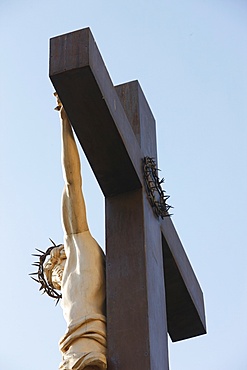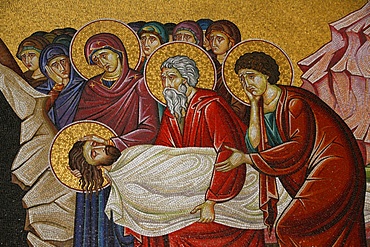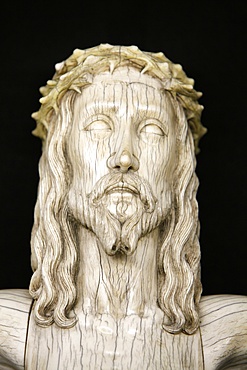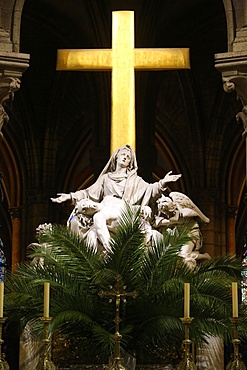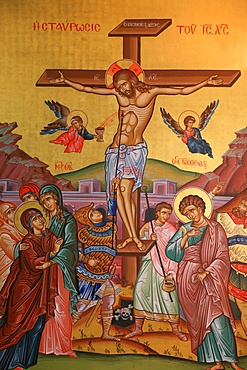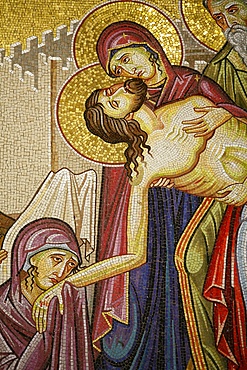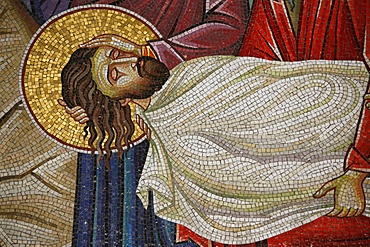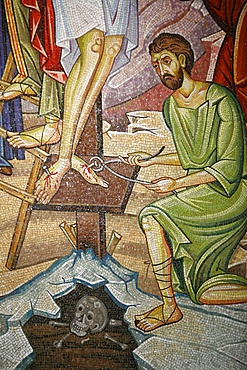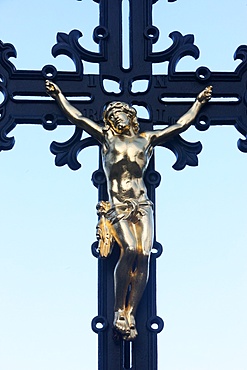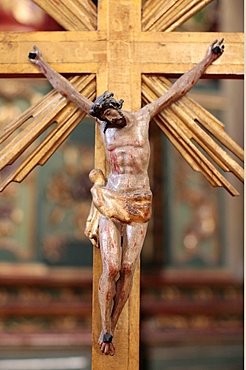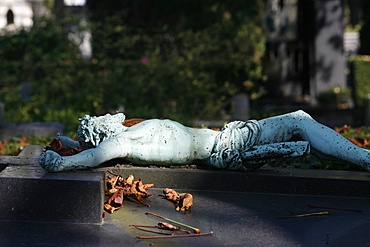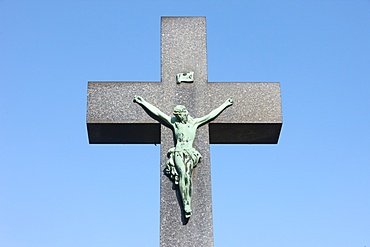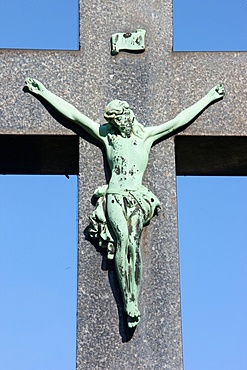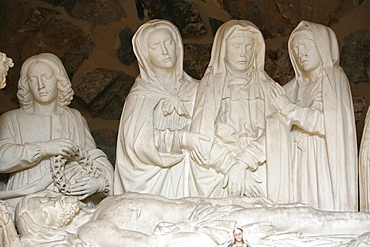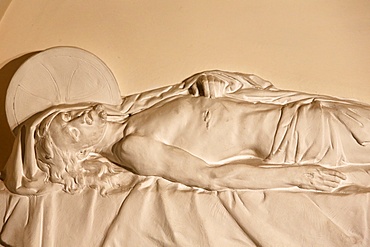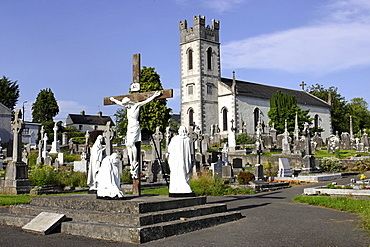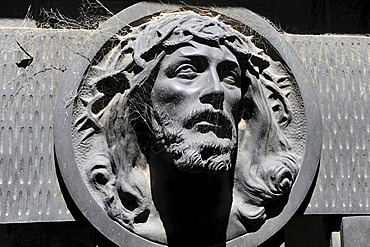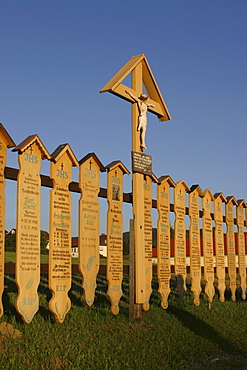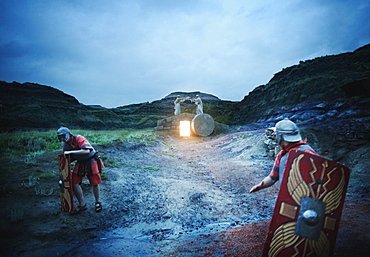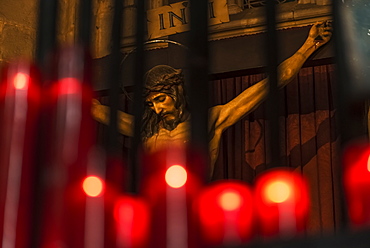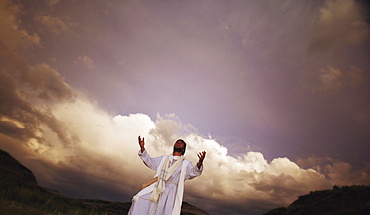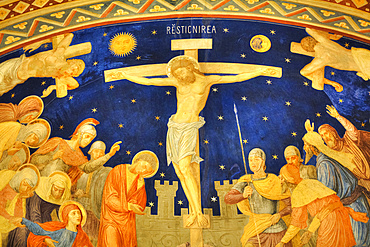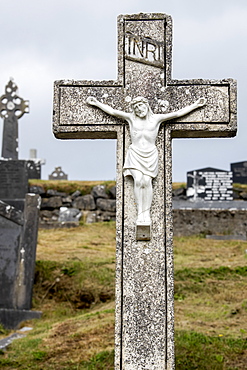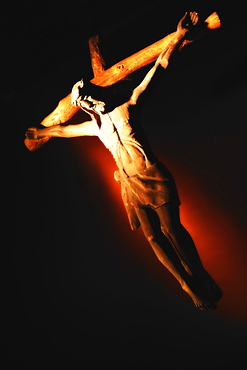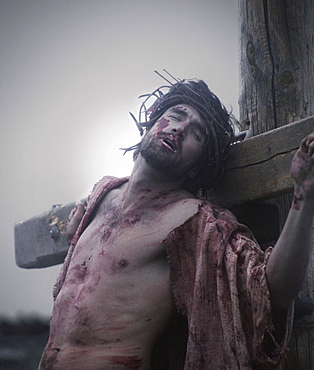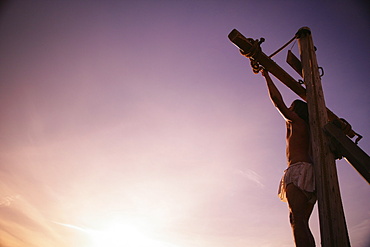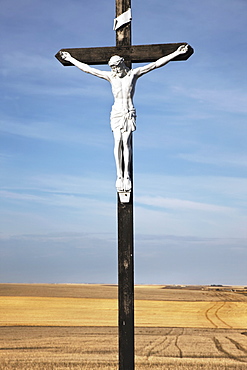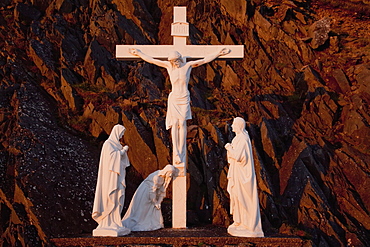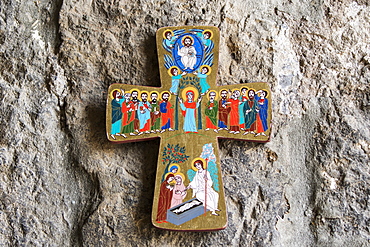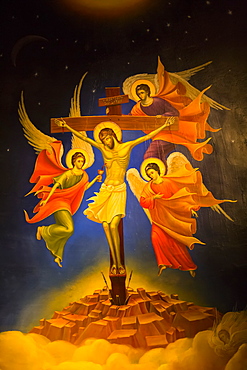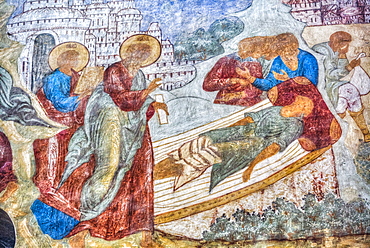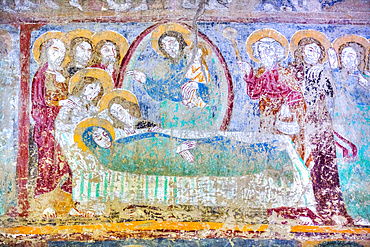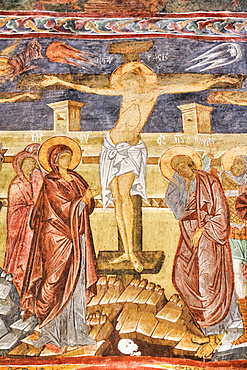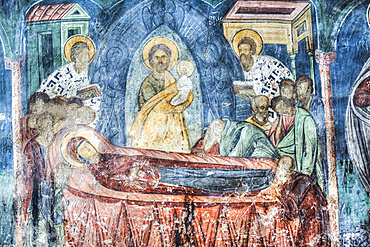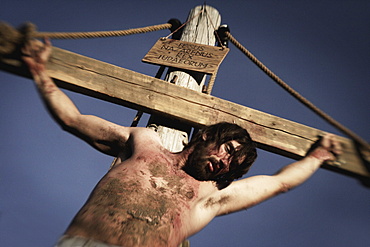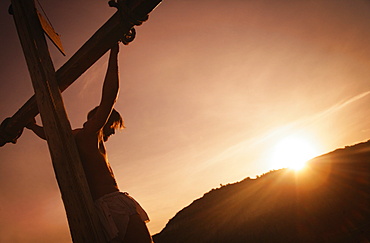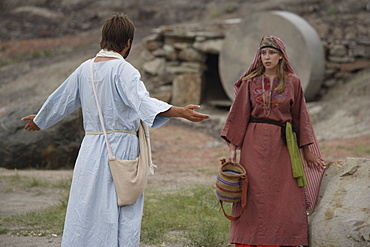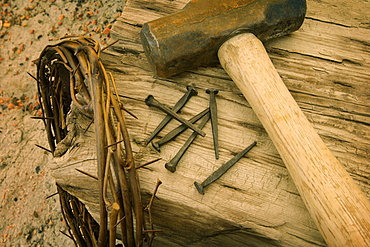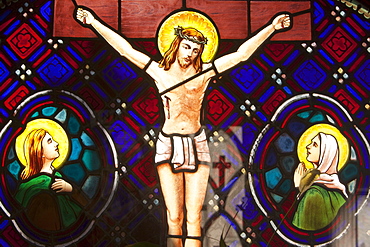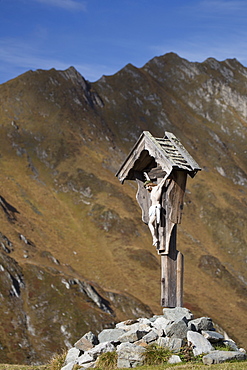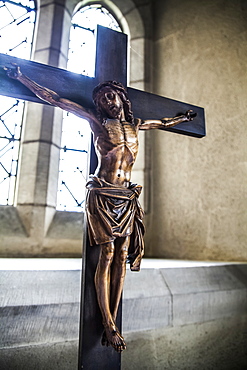Results
33 results found
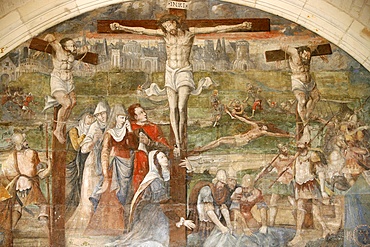
Painting by Thomas Pot around 1563 of the Resurrection, Chapter House, Fontevraud Abbey, Fontevraud, Maine-et-Loire, France
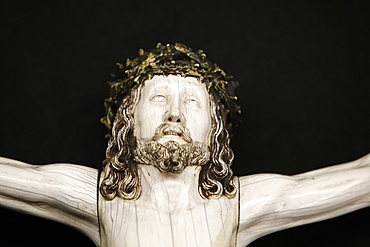
Detail of a Crucifixion sculpture in Notre-Dame de Paris cathedral Treasure Museum, Paris, France, Europe
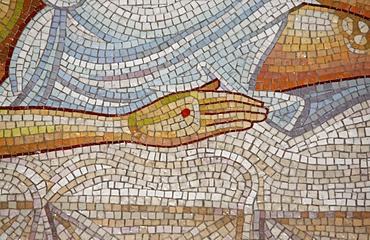
Detail of hand in mosaic of Christ's death at the Church of the Holy Sepulchre, Jerusalem, Israel, Middle East
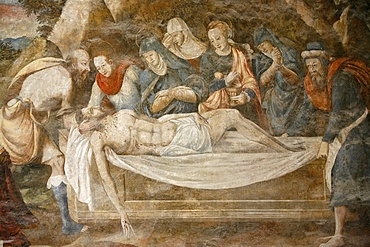
Detail of painting by Thomas Pot dating from 1563 of the Entombment, Chapter House, Fontevraud Abbey, Fontevraud, Maine-et-Loire, France, Europe
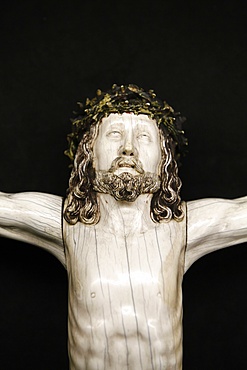
Detail of a Crucifixion sculpture in Notre-Dame de Paris cathedral Treasure Museum, Paris, France, Europe
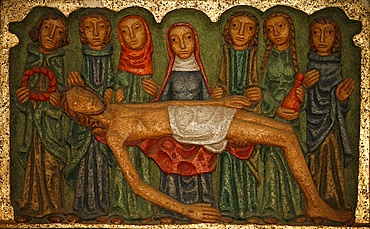
Main altar sculpture dating from 1980, of Jesus taken down from the cross, by Claude Gruer, Saint-Samson cathedral, Dol-de-Bretagne, Ille-et-Vilaine, Brittany, France, Europe

Christ on the Cross on Calvary, Sanctuary-Shrine of Jean-Marie Vianney (the Cure d'Ars), Ars-sur-Fromans, Ain, France, Europe

Mosaic artwork of the death of Jesus Christ, Church of the Holy Sepulchre, Jerusalem, Israel, Middle East
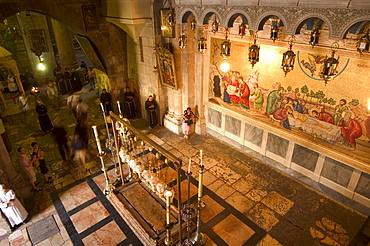
Wall painting of Jesus Christ's death, Church of the Holy Sepulchre, Old Walled City, Jerusalem, Israel, Middle East

The Lamentation over the Christ's death, by Andrea di Bartolo, painted in 1465, Paris, France, Europe

Nuns in front of wall painting of Jesus Christ's death, Church of the Holy Sepulchre, Old Walled City, Jerusalem, Israel, Middle East
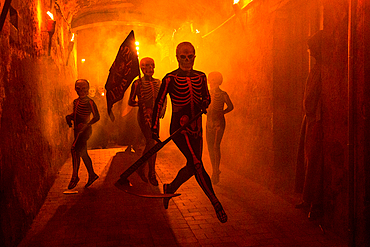
Verges, a small town in the Northeast of Catalonia (Spain), during Easter celebrates the Procession of Verges with skeletons dancing on the sound of a drum, Roman soldiers, known as the 'Manages', and a representation of the life and crucifixion of Jesus Christ. The Procession features the Dance of Death, a tradition from the Middle Age associated with epidemics and plagues and the only one remaining in Spain Ten skeletons dance to the beat of a drum to remember that no one is exempt of death. The backdrop of the medieval walls and towers of Verges is key to this macabre staging.
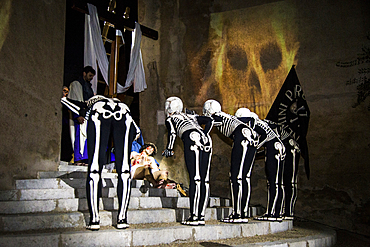
Verges, a small town in the Northeast of Catalonia (Spain), during Easter celebrates the Procession of Verges with skeletons dancing on the sound of a drum, Roman soldiers, known as the 'Manages', and a representation of the life and crucifixion of Jesus Christ. The Procession features the Dance of Death, a tradition from the Middle Age associated with epidemics and plagues and the only one remaining in Spain Ten skeletons dance to the beat of a drum to remember that no one is exempt of death. The backdrop of the medieval walls and towers of Verges is key to this macabre staging.
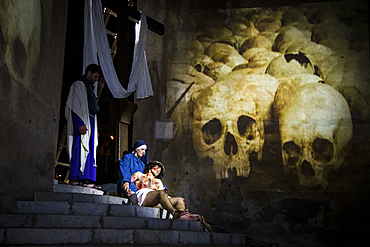
Verges, a small town in the Northeast of Catalonia (Spain), during Easter celebrates the Procession of Verges with skeletons dancing on the sound of a drum, Roman soldiers, known as the 'Manages', and a representation of the life and crucifixion of Jesus Christ. The Procession features the Dance of Death, a tradition from the Middle Age associated with epidemics and plagues and the only one remaining in Spain Ten skeletons dance to the beat of a drum to remember that no one is exempt of death. The backdrop of the medieval walls and towers of Verges is key to this macabre staging.
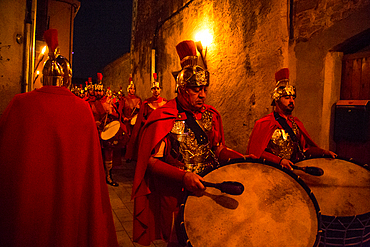
Verges, a small town in the Northeast of Catalonia (Spain), during Easter celebrates the Procession of Verges with skeletons dancing on the sound of a drum, Roman soldiers, known as the 'Manages', and a representation of the life and crucifixion of Jesus Christ. The Procession features the Dance of Death, a tradition from the Middle Age associated with epidemics and plagues and the only one remaining in Spain Ten skeletons dance to the beat of a drum to remember that no one is exempt of death. The backdrop of the medieval walls and towers of Verges is key to this macabre staging.
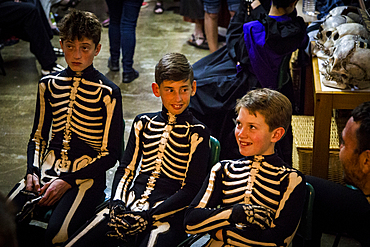
Verges, a small town in the Northeast of Catalonia (Spain), during Easter celebrates the Procession of Verges with skeletons dancing on the sound of a drum, Roman soldiers, known as the 'Manages', and a representation of the life and crucifixion of Jesus Christ. The Procession features the Dance of Death, a tradition from the Middle Age associated with epidemics and plagues and the only one remaining in Spain Ten skeletons dance to the beat of a drum to remember that no one is exempt of death. The backdrop of the medieval walls and towers of Verges is key to this macabre staging.
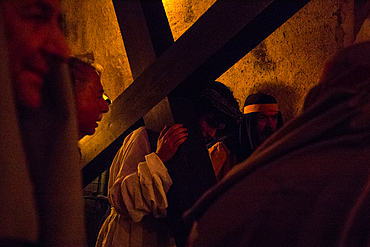
Verges, a small town in the Northeast of Catalonia (Spain), during Easter celebrates the Procession of Verges with skeletons dancing on the sound of a drum, Roman soldiers, known as the 'Manages', and a representation of the life and crucifixion of Jesus Christ. The Procession features the Dance of Death, a tradition from the Middle Age associated with epidemics and plagues and the only one remaining in Spain Ten skeletons dance to the beat of a drum to remember that no one is exempt of death. The backdrop of the medieval walls and towers of Verges is key to this macabre staging.
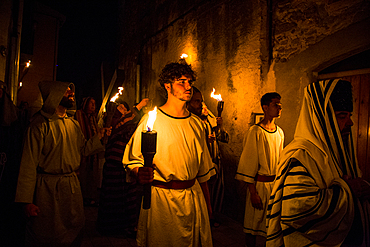
Verges, a small town in the Northeast of Catalonia (Spain), during Easter celebrates the Procession of Verges with skeletons dancing on the sound of a drum, Roman soldiers, known as the 'Manages', and a representation of the life and crucifixion of Jesus Christ. The Procession features the Dance of Death, a tradition from the Middle Age associated with epidemics and plagues and the only one remaining in Spain Ten skeletons dance to the beat of a drum to remember that no one is exempt of death. The backdrop of the medieval walls and towers of Verges is key to this macabre staging.
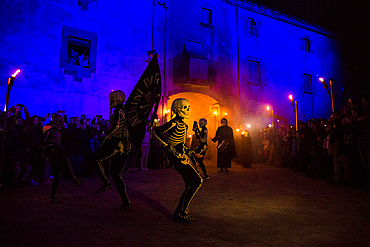
Verges, a small town in the Northeast of Catalonia (Spain), during Easter celebrates the Procession of Verges with skeletons dancing on the sound of a drum, Roman soldiers, known as the 'Manages', and a representation of the life and crucifixion of Jesus Christ. The Procession features the Dance of Death, a tradition from the Middle Age associated with epidemics and plagues and the only one remaining in Spain Ten skeletons dance to the beat of a drum to remember that no one is exempt of death. The backdrop of the medieval walls and towers of Verges is key to this macabre staging.
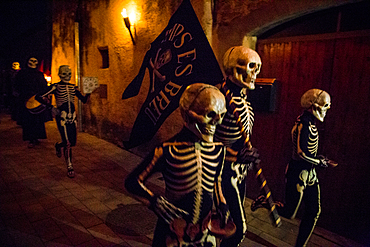
Verges, a small town in the Northeast of Catalonia (Spain), during Easter celebrates the Procession of Verges with skeletons dancing on the sound of a drum, Roman soldiers, known as the 'Manages', and a representation of the life and crucifixion of Jesus Christ. The Procession features the Dance of Death, a tradition from the Middle Age associated with epidemics and plagues and the only one remaining in Spain Ten skeletons dance to the beat of a drum to remember that no one is exempt of death. The backdrop of the medieval walls and towers of Verges is key to this macabre staging.
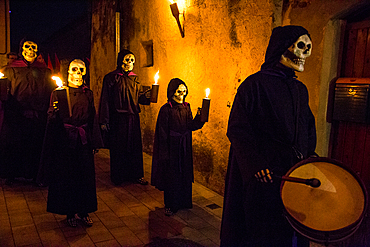
Verges, a small town in the Northeast of Catalonia (Spain), during Easter celebrates the Procession of Verges with skeletons dancing on the sound of a drum, Roman soldiers, known as the 'Manages', and a representation of the life and crucifixion of Jesus Christ. The Procession features the Dance of Death, a tradition from the Middle Age associated with epidemics and plagues and the only one remaining in Spain Ten skeletons dance to the beat of a drum to remember that no one is exempt of death. The backdrop of the medieval walls and towers of Verges is key to this macabre staging.
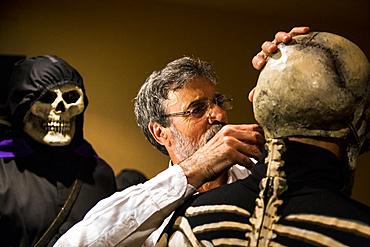
Verges, a small town in the Northeast of Catalonia (Spain), during Easter celebrates the Procession of Verges with skeletons dancing on the sound of a drum, Roman soldiers, known as the 'Manages', and a representation of the life and crucifixion of Jesus Christ. The Procession features the Dance of Death, a tradition from the Middle Age associated with epidemics and plagues and the only one remaining in Spain Ten skeletons dance to the beat of a drum to remember that no one is exempt of death. The backdrop of the medieval walls and towers of Verges is key to this macabre staging.

First relief, Stations of the Cross to Dusenbach monastery, Jesus receiving death sentence, Ribeauville, Alsace, France, Europe

Mary and Christ child, sundial with a prayer, Steh uns bei in aller Not hier im Leben und im Tod, German for standing with us in every need here in life and in death, Salzburg, Austria, Europe

Our Lord of Good Death Cross, Statue of Christ on the Cross, Trancoso, Serra da Estrela, Portugal, Europe
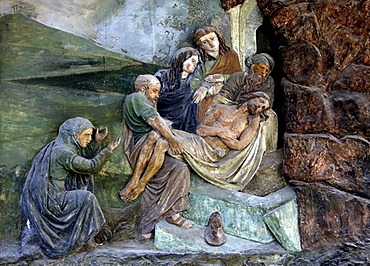
Fresco of the Stations of the Cross, portico of the pilgrimage church ofSacro Monte della Santissima Trinita di Ghiffa in Ghiffa on Lake Maggiore, Piedmont, Italy, Europe
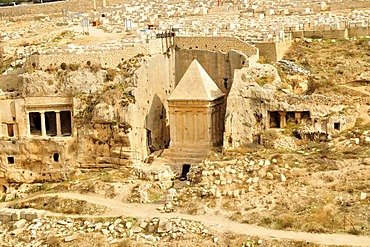
Grave of Zechariah from the 1st century after Christ, Kidron Valley, Jerusalem, Israel, Middle East, Orient
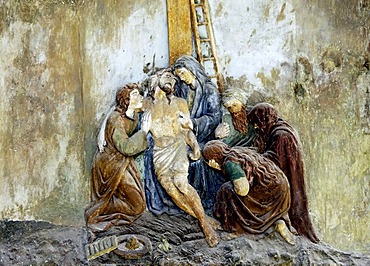
Fresco of the Stations of the Cross, portico of the pilgrimage church ofSacro Monte della Santissima Trinita di Ghiffa in Ghiffa on Lake Maggiore, Piedmont, Italy, Europe

Holy figures, Christian representation, side altar, Protestant Parish Church of St. Michael, Schwaebisch Hall, Baden-Wuerttemberg, Germany, Europe
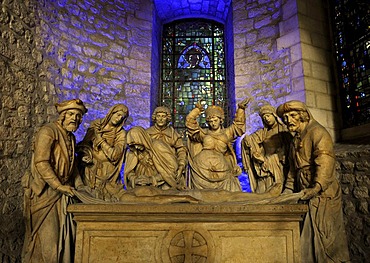
Depiction, Pieta, Virgin Mary mourning Jesus Christ, basilica Abbey of Saint-Remi, UNESCO World Heritage Site, Reims, Champagne-Ardenne, Marne, France, Europe

Statue of a Jesus Christ on a cross, Basilica De Nuestra Senora Del Pilar, Recoleta, Buenos Aires, Argentina

On The Sea Of Galilee, A Statue Beside The Church Of St Peter's Primacy Depicts Jesus After His Death And Resurrection, Appearing Before St. Peter, Galilee, Israel
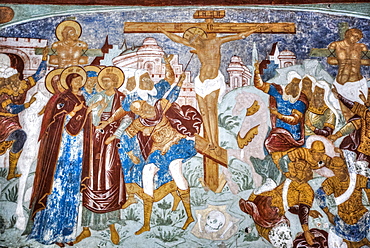
Fresco, Gate Church of the Resurrection (1670), Kremlin, Golden Ring; Rostov Veliky, Yaroslavl Oblast, Russia
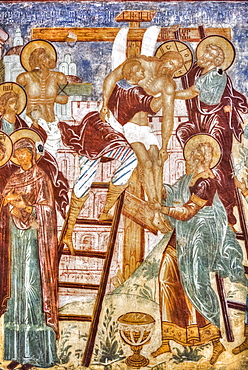
Fresco, Gate-Church of the Resurrection (1670), Kremlin, Golden Ring; Rostov Veliky, Yaroslavl Oblast, Russia
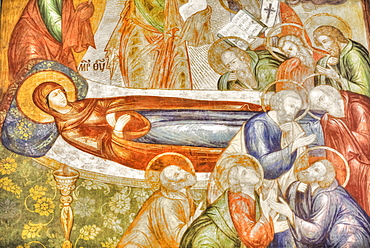
Fresco, Holy Formation Cathedral, Trinity Sergius Lavra Monastery complex; Sergiev Posad, Moscow Oblast, Russia
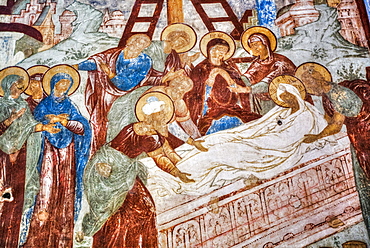
Fresco, Gate Church of the Resurrection (1670), Kremlin, Golden Ring; Rostov Veliky, Yaroslavl Oblast, Russia
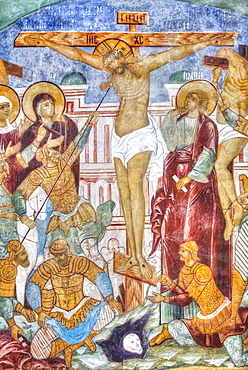
Fresco, Miracle-Image of the Saviour Church, Kremlin, Golden Ring; Rostov Veliky, Yaroslavl Oblast, Russia
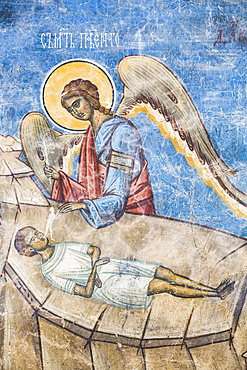
Exterior frescoes, portion of 'Last Judgement', Voronet Monastery, 1487; Gura Humorului, Suceava County, Romania
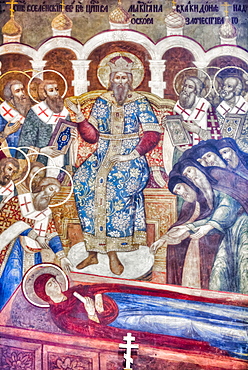
Fresco, Holy Formation Cathedral, Trinity Sergius Lavra Monastery complex; Sergiev Posad, Moscow Oblast, Russia
